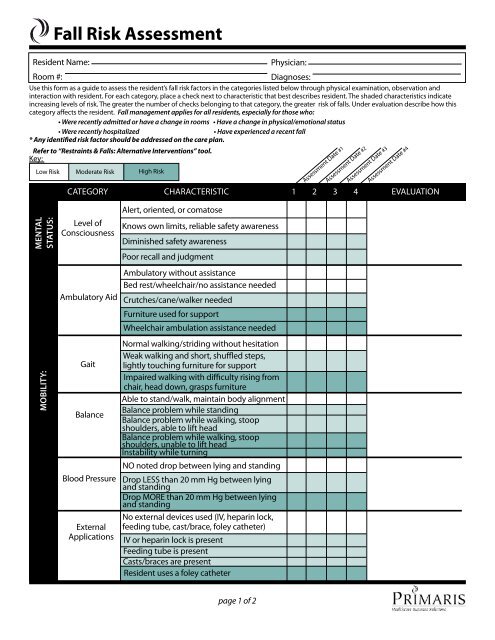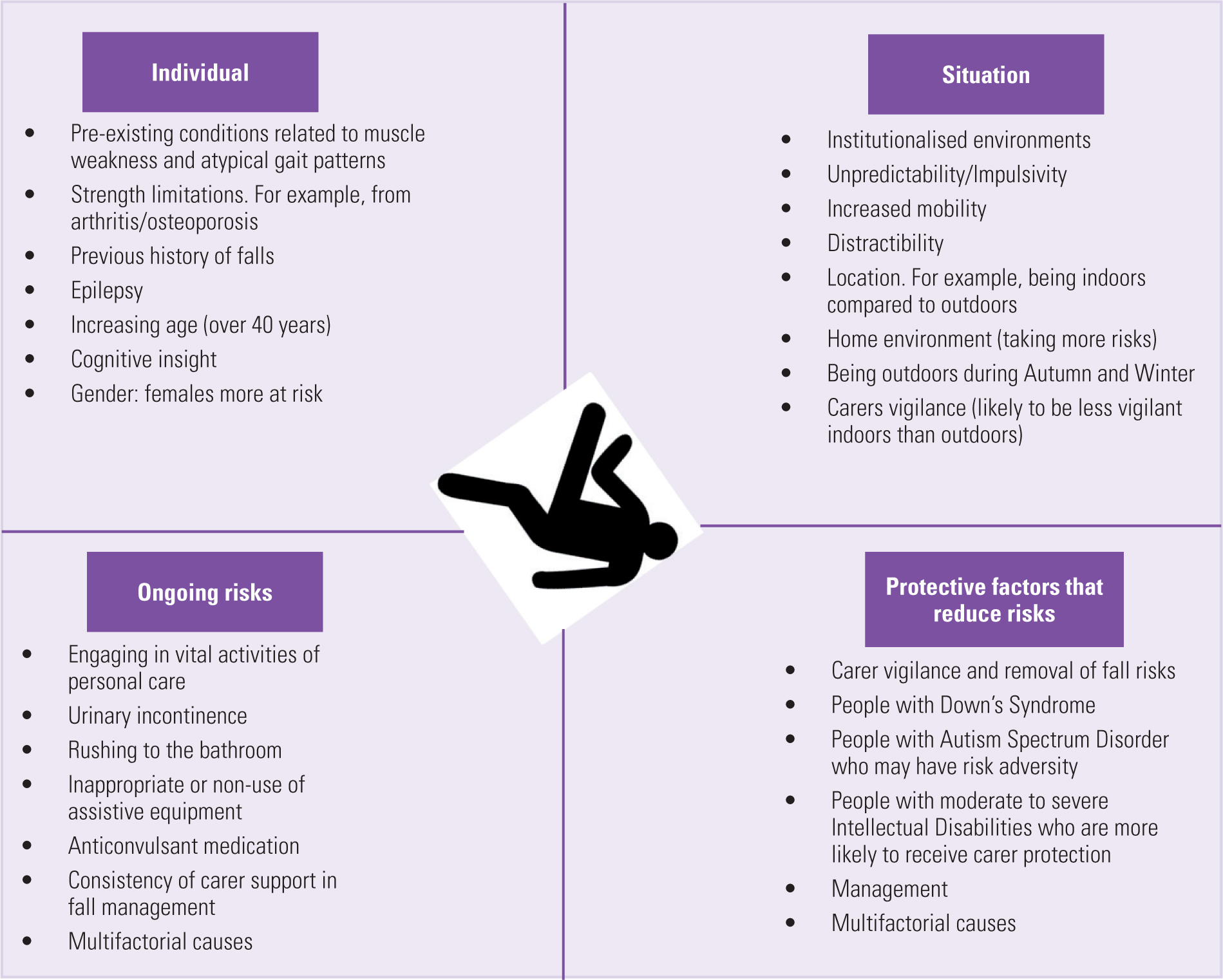Not known Factual Statements About Dementia Fall Risk
Not known Factual Statements About Dementia Fall Risk
Blog Article
Excitement About Dementia Fall Risk
Table of ContentsNot known Incorrect Statements About Dementia Fall Risk The Best Guide To Dementia Fall RiskA Biased View of Dementia Fall RiskSome Known Details About Dementia Fall Risk Examine This Report about Dementia Fall Risk
The FRAT has 3 sections: fall threat standing, threat variable checklist, and activity strategy. A Fall Risk Condition consists of data about history of current falls, medicines, mental and cognitive standing of the person - Dementia Fall Risk.If the client scores on a danger aspect, the equivalent number of points are counted to the client's loss danger rating in the box to the far appropriate. If a person's fall risk score totals five or greater, the individual goes to high danger for falls. If the individual ratings only four points or lower, they are still at some risk of falling, and the registered nurse should use their best scientific evaluation to take care of all loss threat elements as component of a holistic care plan.
These standard strategies, in basic, help develop a secure environment that decreases unintended falls and marks core precautionary actions for all clients. Indicators are important for individuals at risk for drops.
The Greatest Guide To Dementia Fall Risk
As an example, wristbands need to include the client's last and given name, day of birth, and NHS number in the UK. Details must be printed/written in black versus a white background. Only red shade should be made use of to signal unique person status. These suggestions follow present growths in person identification (Sevdalis et al., 2009).
Products that are too far might call for the individual to connect or ambulate unnecessarily and can potentially be a hazard or add to drops. Assists stop the client from going out of bed with no assistance. Nurses reply to fallers' call lights more rapidly than they do to lights launched by non-fallers.
Aesthetic disability can substantially cause falls. Maintaining the beds closer to the flooring lowers the risk of falls and major injury. Putting the bed mattress on the floor substantially minimizes autumn risk in some healthcare setups.
Dementia Fall Risk Fundamentals Explained
People that are high and with weak leg muscular tissues that try to sit on the bed from a standing position are likely to drop onto the bed due to the fact that it's too low for them to decrease themselves safely. If a high client attempts to obtain up from a reduced bed without assistance, the person is this link likely to drop back down onto the bed or miss the bed and fall onto the floor.
They're created to advertise prompt rescue, not to stop falls from bed. Audible alarms can likewise advise the patient not to stand up alone. Using alarm systems can additionally be a replacement for physical restraints. Other than bed alarms, enhanced guidance for high-risk individuals likewise might help protect against drops.

People with a shuffling stride boost fall opportunities significantly. To decrease loss danger, shoes need to be with a little to no heel, slim soles with slip-resistant tread, and sustain the ankles.
3 Simple Techniques For Dementia Fall Risk
Clients, especially older adults, have reduced aesthetic capacity. Lighting an unknown atmosphere assists boost exposure if the individual have to stand up at evening. In a research study, homes with appropriate lights report fewer drops (Ramulu et al., 2021). Improvement in illumination at home have a peek at this website might decrease fall prices in older adults (Dementia Fall Risk). Making use of gait belts by all healthcare service providers can advertise safety when aiding patients with transfers from bed to chair.

Sitters work for ensuring a safe and secure, safeguarded, and safe environment. Researches showed very low-certainty evidence that caretakers lower loss danger in intense treatment healthcare facilities and only moderate-certainty that alternatives like video monitoring can reduce sitter use without increasing autumn threat, suggesting that sitters are not as useful as originally thought (Greely et al., 2020).
The 9-Second Trick For Dementia Fall Risk

Boosted physical fitness reduces the risk for falls and limits injury that is received when autumn transpires. Land and water-based exercise programs may be in a similar way helpful on equilibrium and gait and therefore decrease the threat for falls. Water workout may add a positive advantage on balance and gait for females 65 years and older.
Chair Rise Workout is a basic sit-to-stand workout that helps reinforce the muscles in the thighs and buttocks and enhances flexibility and self-reliance. The objective is to do Chair Rise exercises without making use of hands as the client more tips here comes to be stronger. See resources area for a thorough instruction on just how to carry out Chair Surge exercise.
Report this page